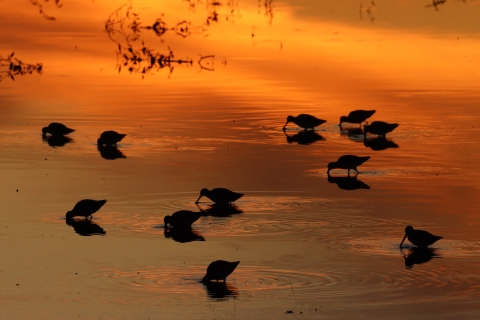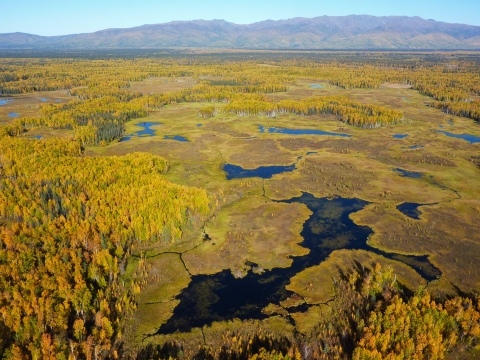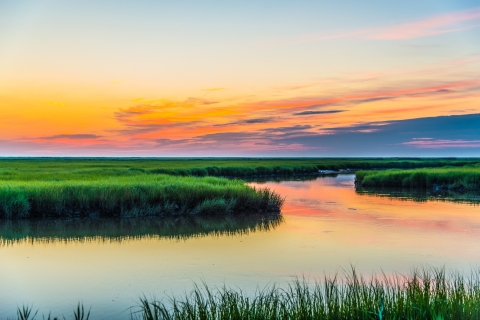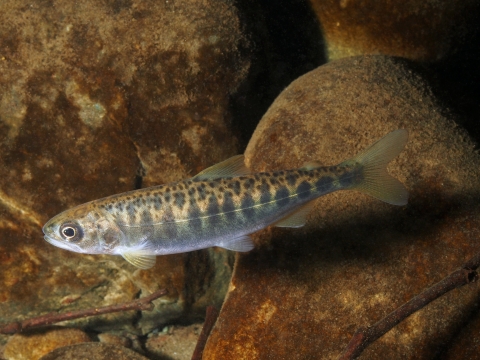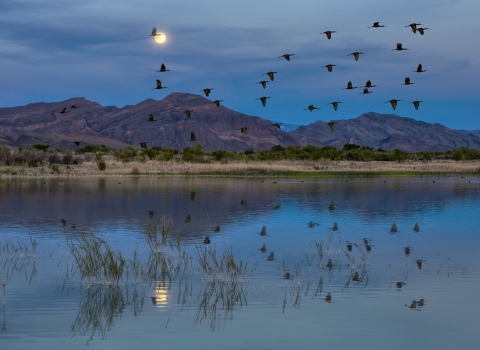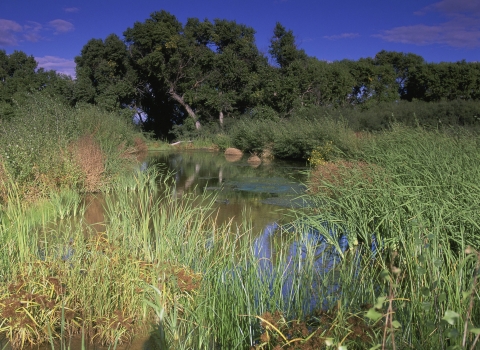May is American Wetlands Month, yet every day is a great time to celebrate these diverse habitats. Wetlands support birds, fishes, amphibians, plants, and more. Discover the importance of wetlands to plants, wildlife, and people around the globe.
More than one-third of America’s threatened and endangered species live only in wetlands.
Their importance is immeasurable. Below are five things you need to know about these watery wonders!
1. Wetlands help clean our drinking water!
The groundwater that people depend on for drinking and other uses is cleaned and purified by wetlands like bogs, marshes, and swamps. When water enters a wetland, it slows down, allowing heavy sediments to drop to the wetland floor and enhance the water quality running into nearby lakes and rivers.
2. Wetlands provide shelter from the storm.
Not only do they purify waters, but wetlands also help mitigate damage from powerful storms and floods. Wetlands function as natural sponges that trap and slowly release surface water, rain, snowmelt, groundwater and flood waters. They serve as buffers during powerful storm events, lessening damage to structures and homes.
3. The United States has more than 40 Wetlands of International Importance!
These sites have received recognition from the international community for their unique biology, incredible diversity and the important habitat they provide for wildlife that migrate from around the world. More than 20 of these are on national wildlife refuges.
4. Wetlands host a variety of habitats and support a diversity of life including many threatened and endangered species.
The Chinook salmon, American crocodile, and Hawaiian stilt (or aeʻo), all call wetlands home. Wetlands are particularly important to many migratory bird species that rely on them for a safe resting place – and also for food, nesting, and breeding habitat.
5. Wetlands are vital to fish and the angler community!
Wetlands provide important nutrients and habitat for many kinds of aquatic plants and wildlife and help ensure fish populations are healthy. According to the National Oceanic and Atmospheric Administration (NOAA), both commercial and recreational fishing contributes over $115 billion to the U.S. economy every year.
It wasn’t that long ago that wetlands were viewed as wastelands. We now know wetlands are productive and valuable resources worthy of protection and restoration. Visit our National Wetlands Inventory for information about status and trends of our nation’s wetlands.

